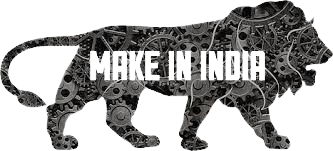Digital Illusion: How to Spot a Deepfake Before It Fools You
Deepfake technology has exploded in recent years. It changes how we see videos and photos every day. These manipulated media can look so real that it's hard to tell what's fake or genuine.
“In a world full of digital illusions, the sharpest skill you can have is the ability to question what you see.”
Deepfake
technology has exploded in recent years. It changes how we see videos and
photos every day. These manipulated media can look so real that it's hard to
tell what's fake or genuine. As AI gets smarter, deepfakes become more
convincing and tougher to detect. This makes it risky for politics, social
media, and our daily lives. It’s more important than ever to learn how to spot
a deepfake from a real video or image. This article will compare deepfakes to
authentic media and share tips, tools, and tricks to help you tell them apart.
What Are Deepfakes? An Overview of AI-Generated Media
Definition and Origins of Deepfakes
Deepfakes
are videos or images created with the help of artificial intelligence. They use
smart algorithms to swap faces, mimic voices, or generate new faces entirely.
The term comes from combining "deep learning," a type of AI, with
"fake." These techniques started a few years ago but now can produce
highly realistic results. Early days involved simple edits, but now deepfakes
can fool most viewers.
How Deepfakes Are Made
Most
deepfakes are made using a tech called Generative Adversarial Networks (GANs).
Think of GANs as two AI programs working against each other one creates fake
images, while the other tries to spot their flaws. Over time, this competition
improves the fake's realism. Popular tools for making deepfakes include
software like Deepakala and Face swap. These platforms make it easier for
anyone to create convincing media at home.
The Purpose and Use Cases of Deepfakes
Deepfakes
serve many good purposes, like helping in movies or education. For example,
they can bring historical figures back to life for documentaries. But bad uses
are also common. Scammers might create fake videos of politicians saying things
they never did. Celebrities face fake videos meant to spread rumours or harm
reputations. As deepfake tech spreads, the risks increase.
Characteristics of Deepfake Content
Visual and Audio Cues That Signal Deepfakes
Deepfakes
often have tiny glitches that give them away. Watch for weird blinking, odd
facial expressions, or lips that don’t match the speech. Sometimes, the eyes
look too blank or the face moves unnaturally. Audio cues can also reveal fakes,
like strange voice tones or mismatched background sounds. These hints can help
you suspect a video isn’t real.
Technological Limitations and Common Errors
Even the
best deepfakes make small mistakes. Lighting might be inconsistent, or shadows
fall strangely. Backgrounds can glitch or flicker during scene changes. These
errors happen because AI still struggles with perfect mimicry of human details.
Recognizing these flaws can help you catch a fake before sharing it.
Real-World Examples of Deepfakes
One
famous case involved a fake video of a political leader making speech threats.
Others include celebrity face swaps circulated online to spread false info.
These videos can cause panic or misinformation, highlighting why it’s urgent to
verify media before trusting it.
Features of Authentic Content
Characteristics of Genuine Videos and Images
Real
videos typically have consistent lighting, natural movements, and authentic
voice recordings. The person’s facial expressions match their words. Background
details stay stable, and there are no odd glitches. Metadata like date stamps
or source info also supports authenticity.
How to Verify Original Content
Always
start by checking the source. Is it a reputable news site or official account?
Use reverse image searches to verify stills or frames. Tools like Google Lens
help identify original photos. After that, look for signs of editing or
manipulation. Comparing the video with other trusted footage can reveal
inconsistencies.
Expert Opinions on Authentic Media
Verification
experts recommend trusting multiple sources. If a video seems suspicious, check
for confirmation from news outlets or fact-checkers. They often analyse and
label content as real or fake. Knowing what to look for is a big part of being
media-savvy today.
Detecting Deepfakes: Tools and Techniques
AI-Based Deepfake Detection Tools
Many
software programs now focus on catching deepfakes. Tools like Microsoft's Video
Authenticator or Deep ware Scanner analyse videos for AI-generated flaws. Some
platforms scan for unusual pixel patterns or inconsistencies. Keep in mind, no
tool is foolproof, but they’re useful as an extra set of eyes.
Manual Analysis Strategies
You can
also spot deepfakes by looking closely. Watch for unnatural facial movements,
strange blinking, or lips that don’t sync perfectly. Shaky or jittery scenes
can also be signs of editing. Pay attention to shadows, eye contact, and
background stability. Practice makes it easier to spot signs of manipulation.
Staying Updated with the Latest Trends
Keep
learning about new deepfake tricks and detection methods. Follow tech blogs,
verification sites, or social media accounts dedicated to media literacy. The
fight between fake media and detection tools is ongoing, so staying informed is
key.
The Future of Deepfake Detection and Media Literacy
Emerging Technologies and Challenges
AI
continues to get better at creating deepfakes, making detection tougher. Future
tech might be able to outsmart current detection tools. That’s why ongoing
innovation is critical. Experts are working on new methods to catch deepfakes
faster and more accurately.
Educating the Public and Promoting Media Literacy
Everyone
should learn how to question media before sharing or believing it. Be sceptical
of videos that seem off or too good to be true. Social platforms, schools, and
governments all have roles in teaching media literacy. The goal is to make it
harder for fake videos to spread unchecked.
Ethical and Legal Considerations
Laws are
slowly catching up with deepfake tech. Some countries restrict AI-generated
media or punish malicious use. Ethical questions arise about privacy, consent,
and misuse. Creating or sharing deepfakes responsibly is essential to avoid
harm.
Conclusion
Knowing
the difference between deepfakes and real media is more important than ever.
Fake videos can look convincing, but clues like odd blinking or background
glitches often reveal them. Using detection tools, verifying sources, and being
critical viewers make you safer online. As deepfake tech advances, so should
your skills in spotting the fakes. Stay alert, stay curious, and always verify
before trusting what you see on screen. The more we learn, the better we become
at telling truth from fiction.



.jpg)